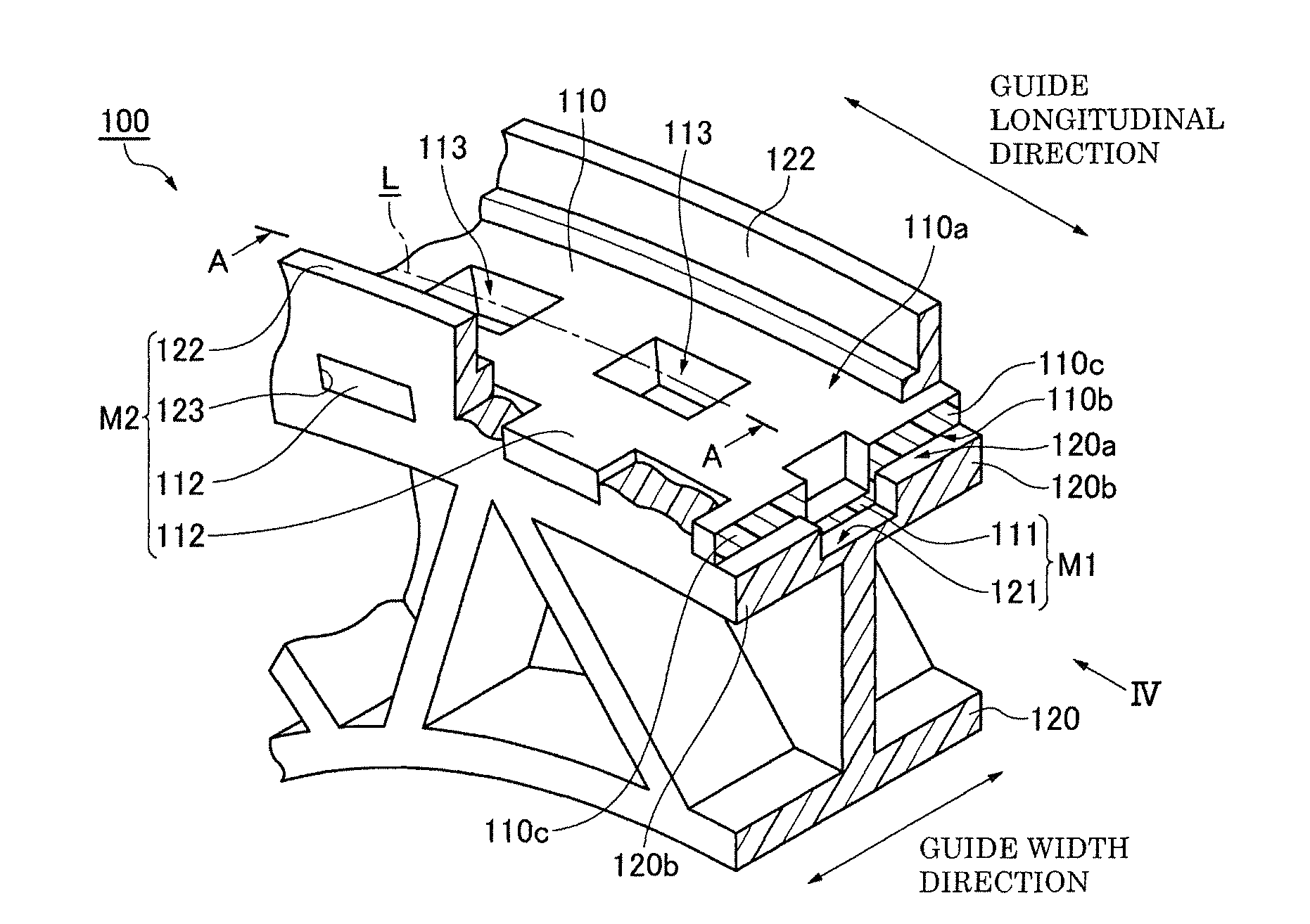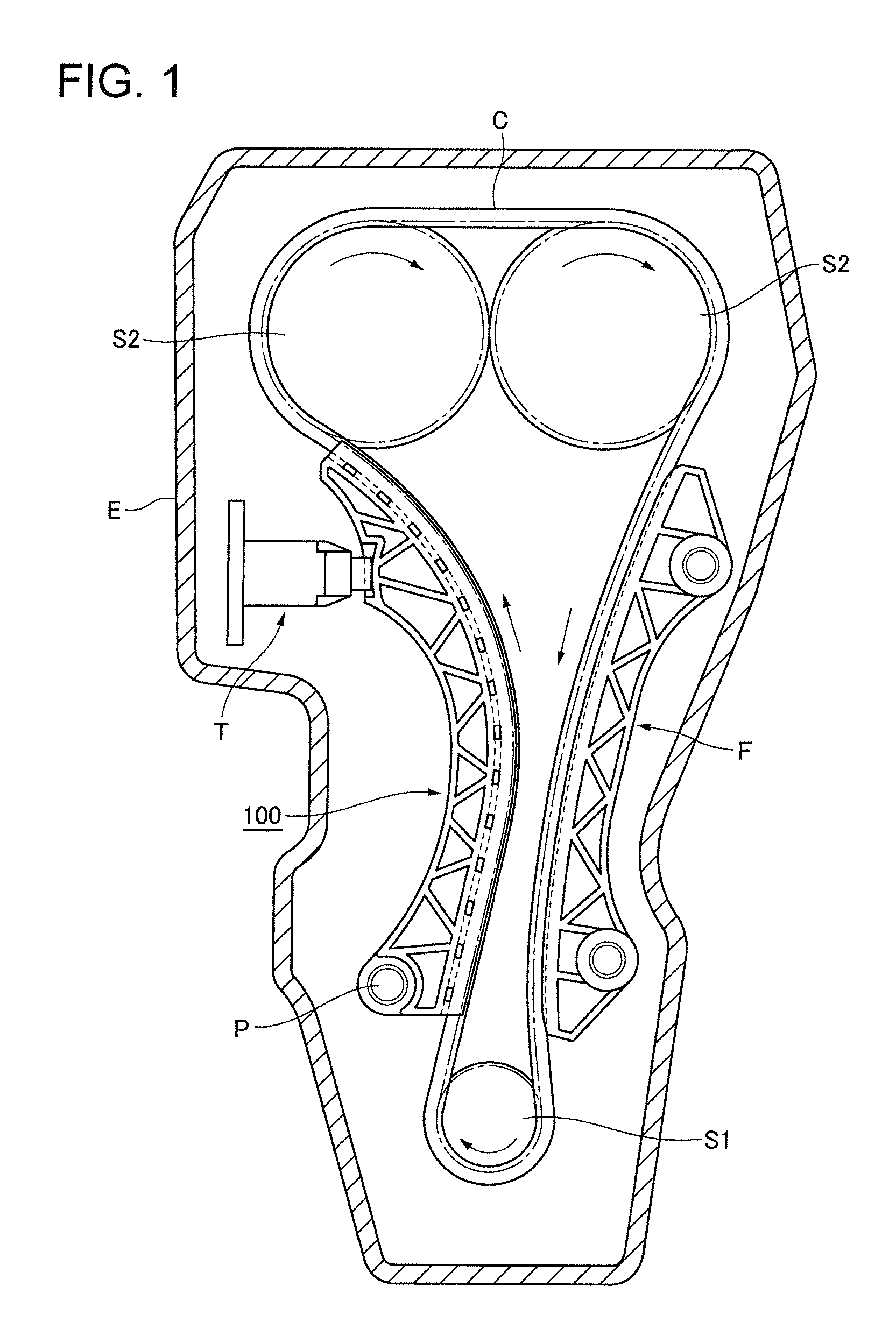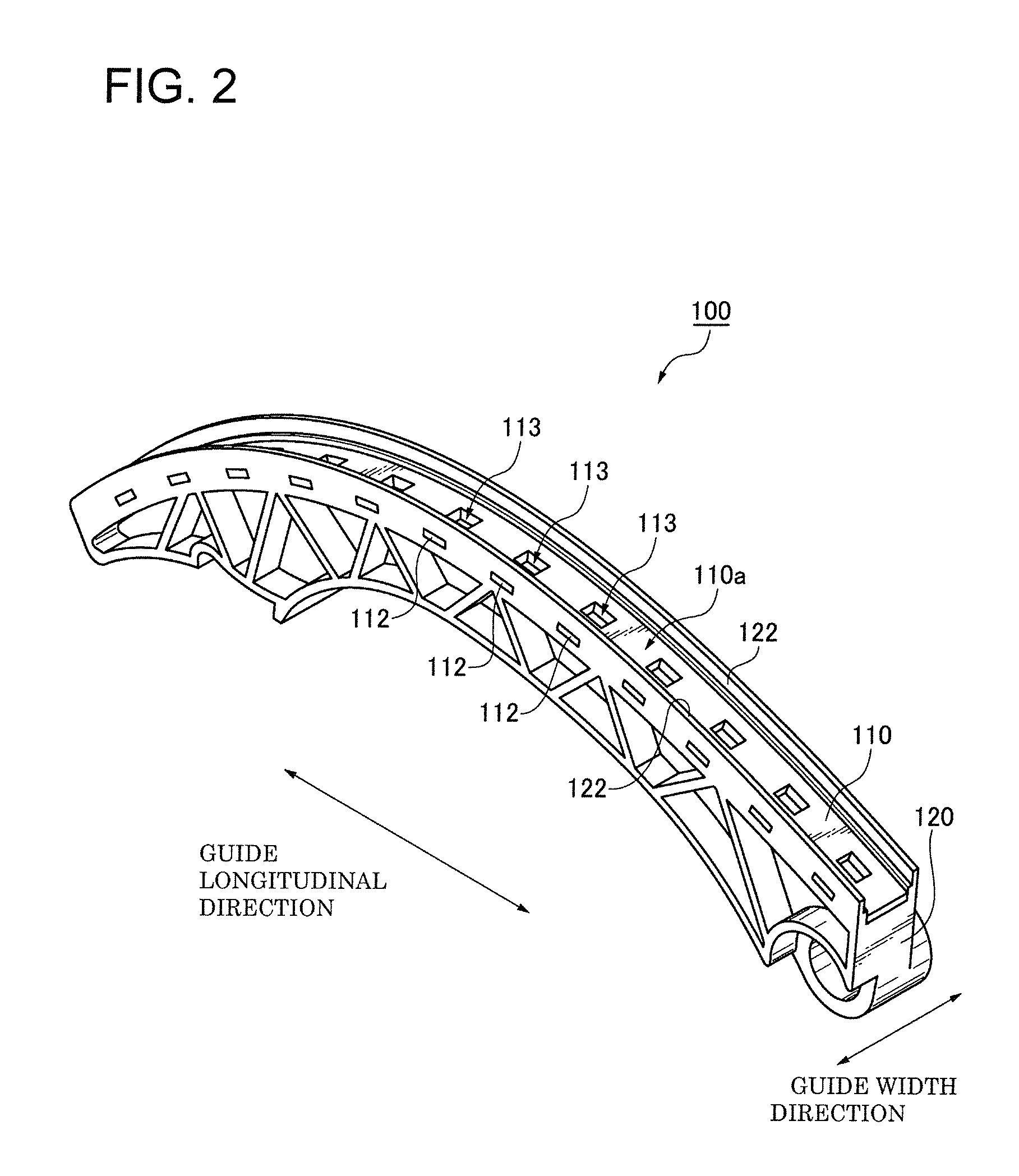Transmission guide
a transmission chain and guide technology, applied in the direction of belts/chains/gearrings, mechanical equipment, belts/chains/gearrings, etc., can solve the problems of separating the shoe from the base, the guide cannot maintain the proper travel of the transmission chain, and the hook breaks, etc., to suppress wear and damage to the sliding contact surface, and reduce frictional loss
- Summary
- Abstract
- Description
- Claims
- Application Information
AI Technical Summary
Benefits of technology
Problems solved by technology
Method used
Image
Examples
first embodiment
[0046]As shown in FIG. 1, the transmission guide 100 of the first embodiment comprises a crankshaft sprocket S1, camshaft sprockets S2, and a transmission chain C in mesh with the sprockets and arranged to transmit power from the crankshaft of the engine to the camshafts. A movable transmission guide 100 is pivoted on a shoulder bolt P attached to the block of engine E and is in sliding contact with a span of the chain C that travels from the crankshaft sprocket to one of the camshaft sprockets.
[0047]To prevent malfunction of the chain transmission caused by excessive tension or excessive looseness of the chain, a tensioner T applies tension to the chain by acting on the chain through the movable transmission guide 100. A stationary guide F attached to the engine block is in sliding contact with the span of the chain that travels from the other camshaft sprocket S2 to the crankshaft sprocket S1.
[0048]In the embodiment shown in FIGS. 2-4, the shoe 110 has an elongated sliding contact...
second embodiment
[0063]In FIGS. 7 and 8, which show the guide according to the invention, reference numbers exceed by one hundred the reference numbers of corresponding parts in FIG. 3.
[0064]Protrusions 211 of a synthetic resin shoe 210, and recesses 221 of a synthetic resin base 220, are formed such that their widths gradually decrease, proceeding in the direction of chain travel. i.e., from the chain entry end to the chain exit end of the guide. Each of the protrusions and recesses has a substantially isosceles trapezoidal shape in cross-section, respectively, when seen in a direction perpendicular to the sliding contact surface of the guide as in FIG. 8. The trapezoidal shape of the recesses 221 suppresses shearing forces applied to shoe 210 in the direction of chain travel. The movable guide 200 of the second embodiment of course also exhibits the above-described effects and advantages of the guide 100 of the first embodiment.
[0065]In FIGS. 9 and 10, which show a third embodiment of the guide ac...
fourth embodiment
[0066]In FIGS. 11 and 12, which show the guide according to the invention, reference numbers exceed by three hundred the reference numbers of corresponding parts in FIG. 3.
[0067]Concave recesses 413 in a synthetic resin shoe 410 have a wedge-like shape, tapering in the direction of the width of the guide, proceeding into the shoe from the sliding contact surface 410a in a direction orthogonal to the sliding-contact surface. The narrow edge at the deepest part of each recess extends in the direction of the length of the guide. The wedge-like shape of the recesses 413 enables oil, which accumulates in the recesses, to flow more readily onto the sliding contact surface 410 of the shoe to lubricate a chain traveling thereon. Again, the movable guide 400 of the fourth embodiment also exhibits the effects and advantages of the guide 100 of the first embodiment.
PUM
 Login to View More
Login to View More Abstract
Description
Claims
Application Information
 Login to View More
Login to View More - R&D
- Intellectual Property
- Life Sciences
- Materials
- Tech Scout
- Unparalleled Data Quality
- Higher Quality Content
- 60% Fewer Hallucinations
Browse by: Latest US Patents, China's latest patents, Technical Efficacy Thesaurus, Application Domain, Technology Topic, Popular Technical Reports.
© 2025 PatSnap. All rights reserved.Legal|Privacy policy|Modern Slavery Act Transparency Statement|Sitemap|About US| Contact US: help@patsnap.com



